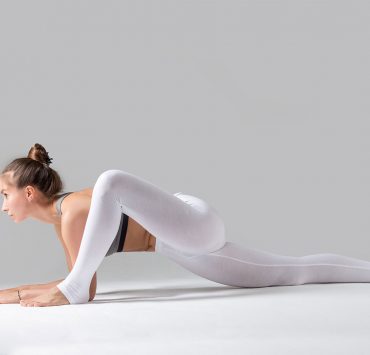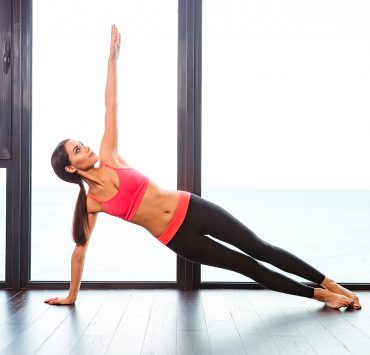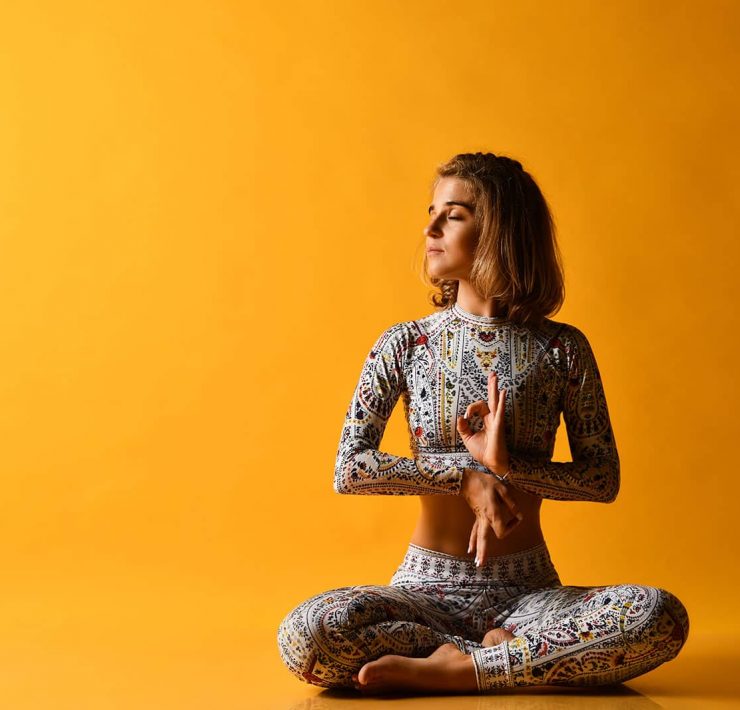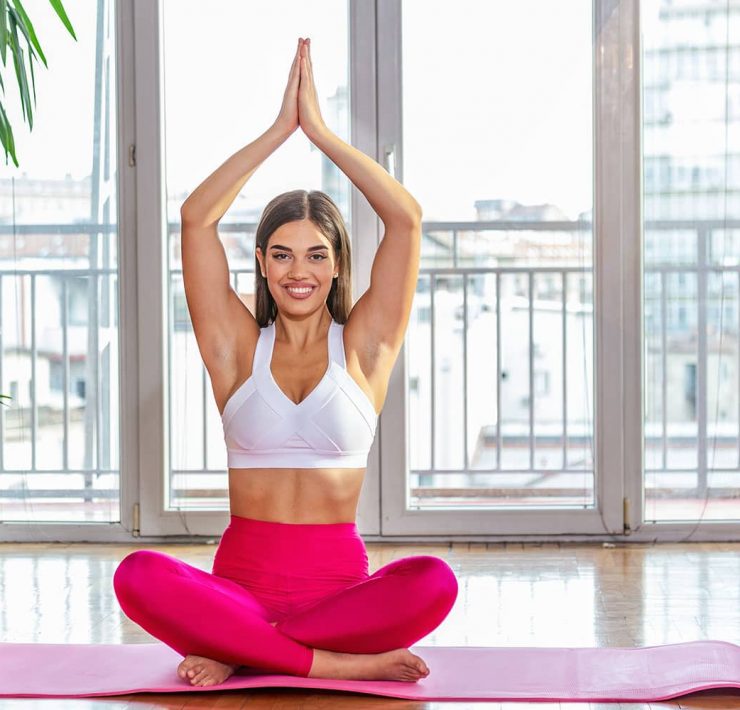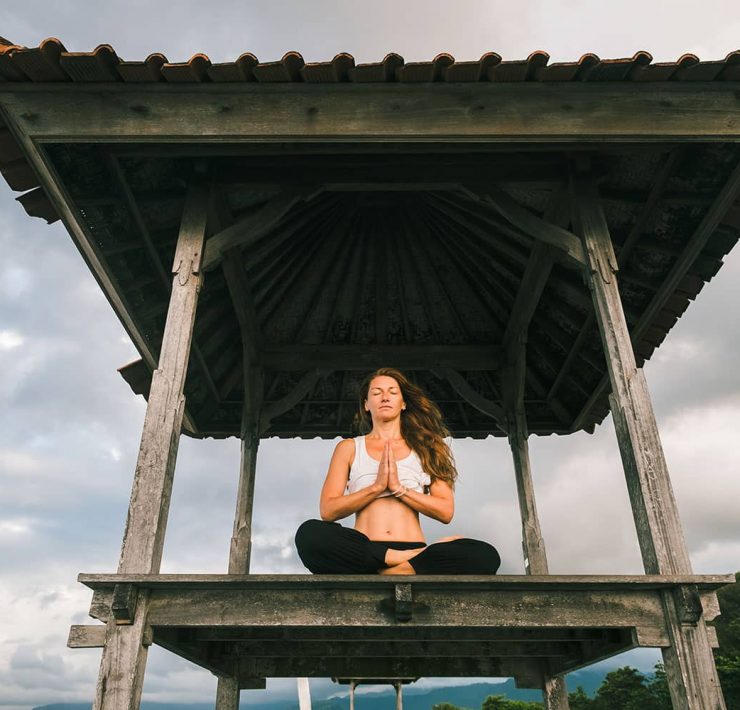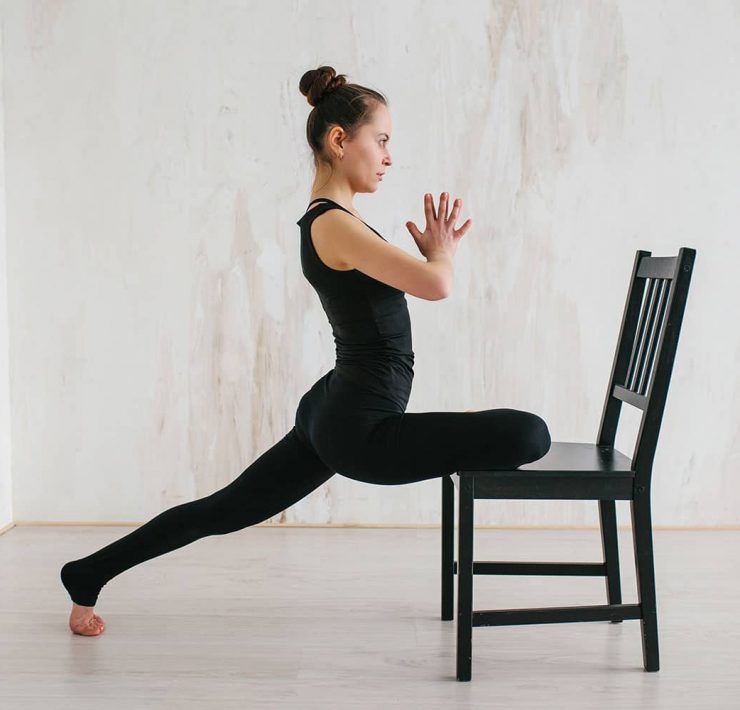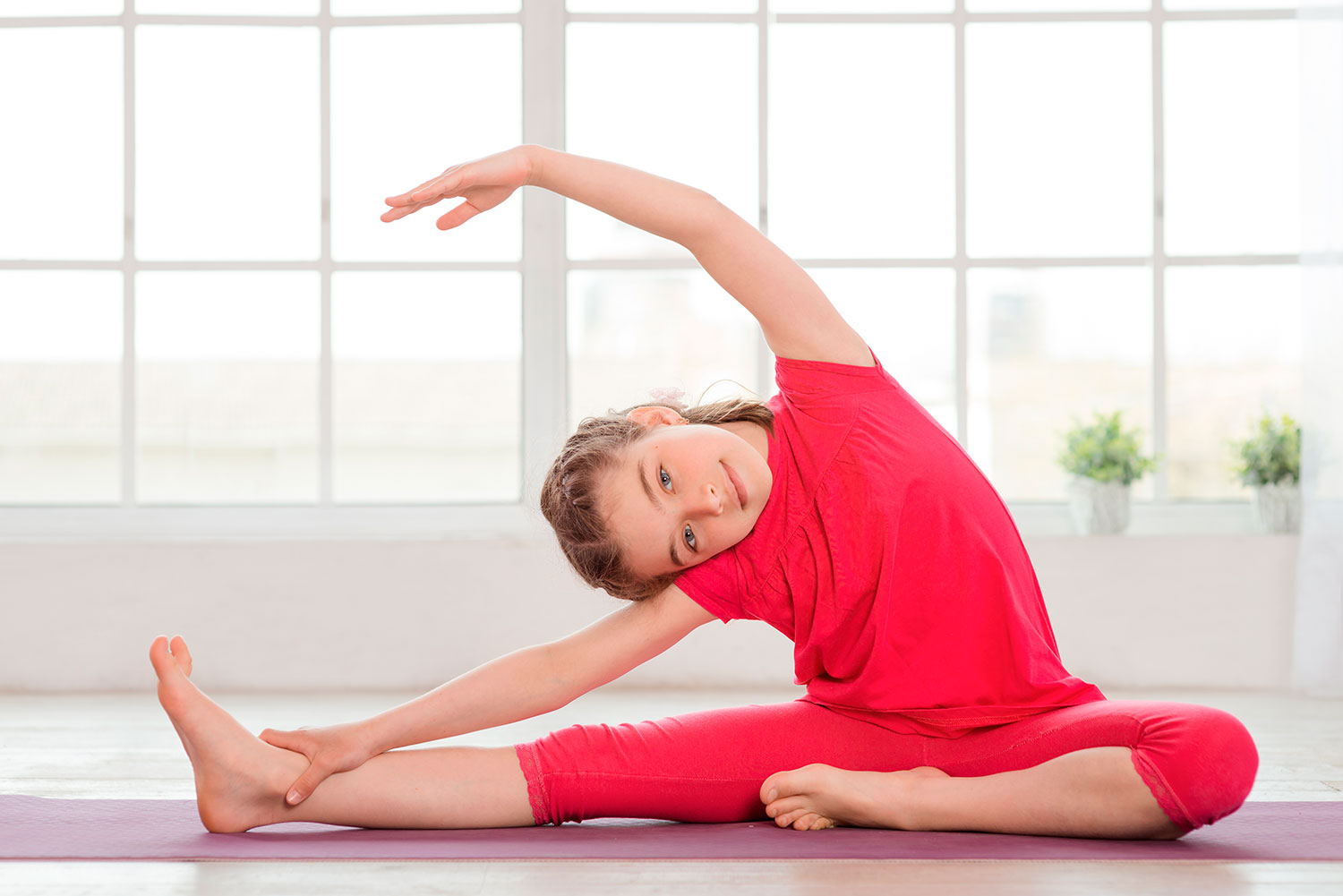
A graduate of Arizona State University, Nicole Baker is a…
Autism is on the rise. Also known as autism spectrum disorder (ASD), there are many different forms caused by genetic and environmental factors. Currently, the Center for Disease Control estimates 1 in 68 children are identified with autism. Children with autism may face social challenges, communication difficulties, and repetitive behaviors. There are also physical and medical issues that may accompany autism such as genetic disorders, GI issues, seizures, sleep dysfunction, sensory processing problems, and pica (eating things that are not food). They may also experience anxiety which activates the sympathetic nervous system, putting the body in fight for flight mode creating a wide range of emotional issues from anxiety to muscular issues. Since autism is a spectrum disorder, symptoms and degree of challenges can vary widely from one person to the next.
Benefits between yoga and autism

Studies have shown that the use of an integrated approach to yoga therapy and mindfulness-based programs may benefit children with autism by increasing cognitive skills and social-communicative behaviors. In one study, children demonstrated increased skills in eye contact, sitting tolerance, non-verbal communication and were receptive skills to verbal commands related to spatial relationship. In another study, children and their parents experienced “improvements in social communication problems, emotional and behavioral functioning, parenting, and parental mindful awareness”. Additionally, mindfulness-based therapies can help the children and families for coping with the demands of living with ASD.
Differences in practicing yoga with children and autism

Practicing yoga with children is often different than practicing yoga with adults. Typically, yoga classes for children are louder and more active. It is not uncommon for children to move constantly, used brightly colored scarves, and move from one activity to the next. Some classes also adjust the lighting throughout the class with brighter lights during the more active portions of the class. However, children with autism thrive on routine and order.
Jennie Ehleringer, a yoga instructor and special education teacher, suggests mindfully setting up yoga classes by being aware of the following concerns:
1. Structure the environment by being aware of safety, distractions, noise levels, predictability, and sensory inputs. The more clean, consistent, and calm a space is the easier it will be. Additionally, setting boundaries such as the consistent use and placement of yoga mats and setting regular routines can assist in making things easier for children.
2. Set clear expectations. Let students what they can expect from one portion of the class to the next and when one activity is completed and the next is starting. Also, discuss rules for what is acceptable behavior during the class such as staying on the mat and when it is okay to get off the mat.
3. Address sensory needs by learning if the child is sensory-seeking or sensory-avoiding. When students are sensory-seeking they may be very busy and move constantly while sensory-avoiding children may be more withdrawn. Both are forms of communication so it is important to learn how to communicate with children when these behaviors are demonstrated.
4. Obtain background information. If the child is not your own, talk with the parents in advance and to learn what some of the child’s strengths and weaknesses are to work with them versus against them when planning a class.
Kidding Around Yoga, a yoga teacher training program that specializes in teaching children’s yoga recommends giving children more time and announcements when they are switching from one activity to the next.
Simple yoga sequence for children with autism

Before starting any yoga or health-related practice it is important to talk to a healthcare provider. Additionally, there is no one size fits all approach. Because autism is a spectrum disorder, some changes can and should be made to meet the needs of the child. A yoga class is made up of four main components:
1. Chanting (mantra)
2. Breathing (pranayama)
3. Postures (asana)
4. Deep relaxation (savasana)
A sample sequence to practice with a child is outlined below but can be adapted as needed. Giving children breaks, announcing the completion of an activity, using visuals such as flashcards, and allowing students to also help pick their poses to help establish control can be helpful when using this sequence
Chanting
Chanting or mantras can help children with autism find a sense of internal rhythm when the balance between their inner and outer world is disconnected. Chanting for children can be kept simple. By simply chanting the sound “Om”, it keeps the practice simple and easy to follow. However, simple phrases or even phrases that may feel more comfortable for certain religious faiths can be used such as “Amen”. Once a mantra is decided, let the child take a deep breath in and slowly on the exhale release an “Om”. It could be helpful to allow them to close their eyes and just focus in on the sound. Allow the kids to practice different tones or lengths to make it fun and give them a sense of control and freeplay as well.
Bumble Bee Breath
This pranayama is good for children because it helps draw the senses inwards. It can be incredibly calming and help reduce external sensory input. To start, have the child start in a comfortable sitting position. Take a deep inhale and with the mouth closed on the exhale make a buzzing sound as long as the exhale. After practicing a few times, the child can then try with their eyes closed and blocking their ears with their hands. They can also experiment with different sounds.
Salamba Balanasana — Child’s Pose

Child’s pose can teach students to honor their body and take rests whenever they need to as well as stretch the spine and the side body. Students can come on to their hands and needs, reach their sitz bones back towards the heels while letting the forehead rest on the ground. Arms can reach forward or lay along the side body. This is also a good pose to come into for timeouts to calm the energy down.
Marjaryasana — Cat/Cow Pose

Cat cow is a fun posture for children because it can incorporate sound and movement. When teaching cat cow to children, using animal sounds for each part of the posture can help students connect movement and sound. To start, come into a table top posture, release the belly and let the gaze go forward while letting out a long “MOOOOOO”. After cow, transition it cat pose by arching back upwards and letting on a “MEOOOOOW” sound. Do this as long as what’s comfortable.
Tadasana — Mountain Pose

Mountain pose can be very grounding while strengthening the body while at the same time establishing body awareness. Positive mantras and visualizations can be used such as “Pretend you’re as tall and strong as Mt. Everest” while using pictures or flashcards of mountains. Activities such as coloring can also be included for students to draw their own mountain before trying the pose. Try to give clear instructions to the students: rotate the feet forward, stand up tall, bring the belly in, relax the shoulders, and rotate the palms forward– stand up tall like a mountain. Depending on their ability, it may be helpful to give them cues with their eyes closed to sense their bodies but if that’s uncomfortable, confusing, or scary to children they can always do it with their eyes open.
Vrksasana — Tree Pose

Tree pose helps with balance and focus. Start by having the child find a focal point to focus on. It could be an object in the room or something more fun like a star or animal cut placed on a wall in front of them. Depending on their ability, it could be helpful to give them something to support for balance such as a buddy, a chair, or a wall to hold on to. Let one foot ground into the floor while the other foot lifts and presses against the inside of the standing leg. Remind the student to focus on their focal point. Hands and arms can go wherever is most comfortable such as holding onto the waist, in prayer, or arms up to the sky.
Forward folds with a partner

Partner poses help children by becoming aware of their own bodies, communicating their own needs, and learn how to work with other people safely. The child and their partner can start seated and facing each other. Each partner should spread their feet out wide and let the bottom of their feet touch their partner’s feet. Then they should reach towards the center and hold hands. One partner stretches backward while the other partner will naturally fold forward. The movement should be slow and each partner should be prepared to communicate their needs if they need more or less. Then the partners alternate by simply reversing their movements while still holding hands. Partners can switch back and forth until ready to move to the next pose.
Paripurna Navasana — Boat Pose

Boat pose will help tone muscles while teaching balance. To start, children can sit on the floor with their feet planted and knees bent. Let the hands press onto the mat underneath the shoulders, like anchors. Then lift the feet and try to lengthen the spine. For a little more fun, students can row their boats by taking their hands off the floor and making rowing motions with just their hands or bring their knees in and out while they row.
Bridge Pose

Bridge pose can be calming in addition to stretching the body and toning the lower body. Students can lie down, bend their knees, and press soles of the feet on the mat. While keeping their gaze up towards the sky they can lift their hips up. Keep the hips lifted up for a few breaths and slowly lower down. Hug the knees into the chest for a counterpose.
Savasana — Corpse Pose

To rest the body and helps draw the awareness back in, students can do savasana to help relax. It could be helpful to dim the lights depending on the sensory needs of the child. Let the children lie down on their backs and close their eyes, resting peacefully until it is time to end the practice. Guided visualization such as being in a forest or garden can be used to help them relax.
Mindfulness techniques for children with autism

Mindfulness is a form of meditation which is a part of the 8 limbs of yoga. Not only will children receive benefits and coping mechanisms but research has shown that when parents practice with their child, the parents’ overactivity and stress is also decreased. Practicing mindfulness can be done before or after a yoga practice or as a stand-alone practice.
Every child is different and while some will only be able to do shorter meditations such as a minute or less, some may naturally find comfort in it. It’s important not to force or push length but simply to work with the children where they are at. There are apps available online for children and parents to learn how to practice mindfulness. However, a simple mindful breathing exercise can easily be taught.
To breathe mindfully, complete the following steps for as long as short as they like.
1. Sit or lie down comfortably.
2. Close the eyes gently and relax the body.
3. Start to notice the breath and observe it. Notice things like the length of the breath, how the belly moves, how do the shoulders move, does the breath change.
4. If the mind starts to wonder or the body moves, know that it is okay and natural. When you notice the distraction, become aware of the distraction and then try to come back to watch the breath.
5. Notice how you feel after the practice.
Children can also be taught and the end of the exercise that they can always mindfully breathe whenever they feel anxious, irritated, stressed or upset as an alternate behavior or coping mechanism for inappropriate behavior.
Conclusion

Practicing yoga is hugely beneficial for not only children with ASD but their parents and caretakers. By learning how to adapt a yoga practice towards the needs of the child, it can contribute to overall health, communication and lifestyle improvements.
What's Your Reaction?
A graduate of Arizona State University, Nicole Baker is a force to be reckoned with in the realm of health and wellness. She studied behavioral health, which propelled her desire to live holistically and share her knowledge with other like-minded individuals.






